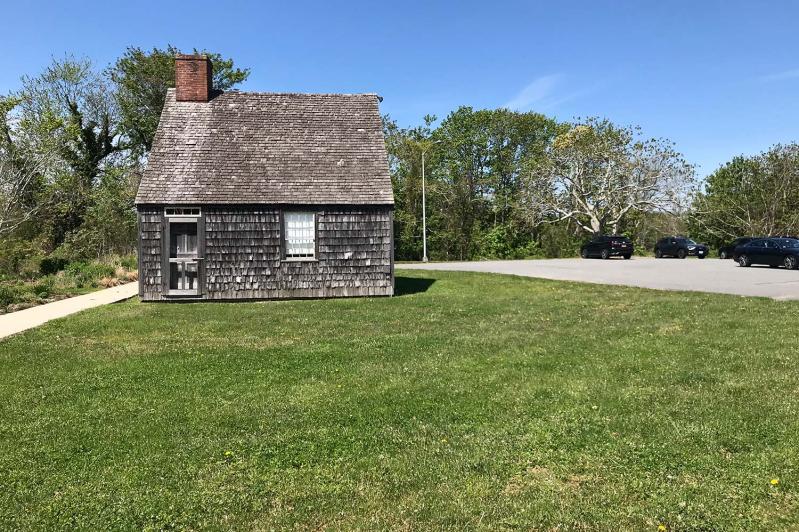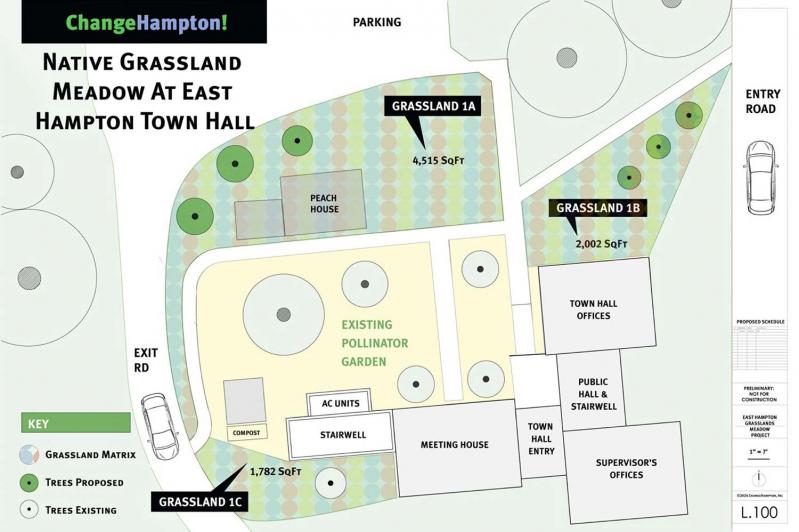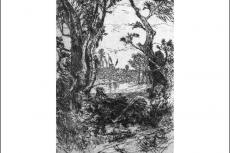ChangeHampton, a community-based environmental organization, makes use of the concept of pollination both literally and figuratively.
Two years ago, they worked to plant a pollinator garden at the East Hampton Town Hall campus on Pantigo Road. On May 7, it asked the East Hampton Town Board to augment those plantings with an adjacent 6,500-square-foot grassland meadow, which it hopes to begin work on this autumn. Through both, ChangeHampton hopes to pollinate passers-by with the idea of an alternative to sod and the endless maintenance a traditional lawn requres.
“Grasses have all-season interest,” Stephan Van Dam, a co-founder of ChangeHampton, told the board. “The way this plan is, people can have a drive-through and a walk-in experience to entice them. They may say, ‘I have this big lawn, wouldn’t it be nice to have a more painterly approach?’ "
Native grasses host native insects and are drought resistant. They have extensive root systems that are restorative to soil. Mr. Van Dam provided a preliminary list of the grass species that will be seeded at the proposed meadow: big bluestem, little bluestem, Indian grass, switchgrass, and Pennsylvania sedge.
The group envisions three separate sections of the garden, which would adjoin both the existing pollinator garden and the entrance and exit to Town Hall. The walkway from the parking lot would be flanked by grasslands. During the presentation, ChangeHampton representatives referred to the three sections as Grassland 1A, with 4,515 square feet along the parking area and exit road; Grassland 1B, with 2,002 square feet visible from the entry road; and Grassland 1C, with 1,782 square feet in the front of the building, visible from Pantigo Road.
Town Supervisor Kathee Burke-Gonzalez and Councilman David Lys had some concerns about future use of the Peach Farm house — a standalone building dating to 1730 that was moved to the site from Northwest Woods and now stands beside the parking area — and did not seem convinced about the largest section of the grassland. “The board is generally supportive,” said Supervisor Burke-Gonzalez. “We just need to work out specifics to see if 1A will work for us.”
The project will be funded in part by a private donor, but the group has also applied for grants and is seeking donations.
Gail Pellett, a co-founder of ChangeHampton, told the board that before European settlers, Long Island was home to extensive grassland meadows, and that in the last 50 years, over three billion birds have been lost in North America, partly because of habitat loss.
“There was a 40,000-to-60,000-acre grassland called Hempstead Plains in the middle of Long Island up until the late 1800s,” she said. “Today, those grasslands have been reduced to 62 acres. So much of our native habitat has been paved over, built upon, or replaced by toxic lawn culture.”
“Grasslands are less structured than pollinator gardens,” said Mr. Van Dam. “Think of them like a freeform painting. The plan is to mix native grasses with pollinator-friendly wildflowers to bring back birds and bees to the Town Hall campus.”
“In the summer, fall, and winter, we would maintain the garden and weed,” he said. “These are unsexy words about gardens and meadows, but they are at the root of the work.” While weeding is work, after the meadow was established, it would require less maintenance than the current lawn. “It’s a model to show how we can take care of our landscapes in a more natural way at a lesser expense. It promotes a different approach to landscaping.”
“Our ultimate goal is to contribute to East Hampton Town becoming a model of healthy, biodiverse, resilient landscaping for other towns in Suffolk County and Long Island to follow,” said Ms. Pellett. What they were requesting from the board was permission to create the meadow, help to prepare the ground, a maintenance partnership, and a promise that the town would take control of it in 2027.
“What would the maintenance be in 2027, what are we looking at?” asked Councilman Lys.
“One or two mows a year,” said Paul Munoz, a ChangeHampton steering committee member.
“I’m supportive,” said Councilwoman Cate Rogers. “It’s showing another way to beautify your space without a green turf lawn and the negative impacts we know so well about their pesticides, fertilizers, and the amount of time it takes to maintain them.”





